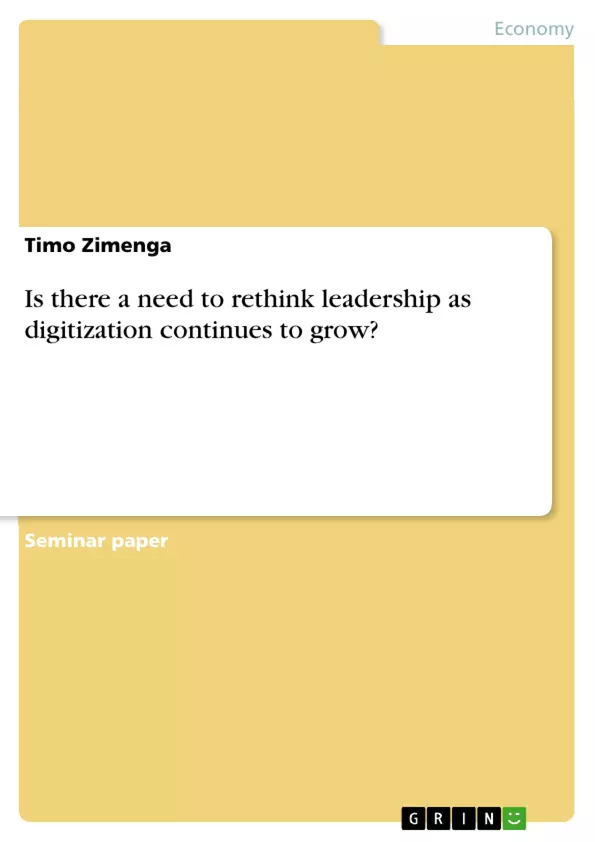Due to the increasing spread of many companies into international markets, one can clearly see that globalization is continuing to rise. The entry into new markets is simplified by the fact that nowadays online platforms and especially social media platforms can often be used to handle for example sales tasks. This shows that the age of the digital revolution has been reached which is additionally confirmed by individual companies that are changing their internal procedures to implement this digital trend. The result must be that business leaders are forced to think about their internal processes, and leadership in particular.
In order to find out more about digital leadership, the assignments objective for the module “Soft Skills & Leadership Qualities” is the answering of the research question:
“Is there a need to rethink leadership as digitization continues to grow?”
Firstly, this paper will provide a short introduction about the theoretical background. Within this, the following chapters are introduced:
- the traditional form of leadership;
- insights of digital leadership.
After introducing already established leadership styles and the actions needed for a new way of leading, the paper switches over to the core topic, the 21st century leader and its requirements. Finally, this theoretical background is needed to highlight the differences between both leading styles, which will be compared together with the information out of the core topic within the conclusion part.
As a result, leaders need to rethink how to manage their business and especially their employees in today's volatile and uncertain world. Static forms such as "control, plan, analyze" can no longer be applied as strictly as they used to be. Due to the changing environment, leaders need to focus on globalization, innovation and communication and develop a strong global mindset.
Inhaltsverzeichnis (Table of Contents)
- Executive Summary
- List of Abbreviations
- List of Figures
- Introduction
- Theoretical background
- The traditional form of leadership
- Insights of digital leadership
- Digital leadership
- Requirements for digital leadership & digital leaders
- The 21st century leader
- Conclusion
- Bibliography
- ITM Checklist
Zielsetzung und Themenschwerpunkte (Objectives and Key Themes)
This paper investigates the evolving nature of leadership in the face of rapid digitization. It aims to determine whether traditional leadership styles need to be reconsidered in the digital age. The paper focuses on the characteristics of both traditional and digital leadership, exploring the requirements for successful leadership in a rapidly changing digital landscape.
- The evolution of leadership in the digital age
- Key characteristics of traditional and digital leadership
- The impact of digitization on leadership styles
- Requirements for effective leadership in a digital environment
- The role of technology and innovation in leadership
Zusammenfassung der Kapitel (Chapter Summaries)
The paper begins with an introduction that sets the context for the research question, highlighting the significance of digitization in the business world. Chapter 2 then delves into the theoretical background, examining the traditional form of leadership and exploring the emerging concepts of digital leadership. Chapter 3 focuses specifically on digital leadership, analyzing the requirements for digital leaders and examining the characteristics of the 21st-century leader. The conclusion, while not included here, likely synthesizes the findings and offers insights into the future of leadership in the digital age.
Schlüsselwörter (Keywords)
The paper centers around the key concepts of leadership, digitization, traditional leadership, digital leadership, 21st-century leader, global mindset, innovation, and communication. These terms encapsulate the core themes and concepts of the research, offering a comprehensive understanding of the dynamics shaping leadership in the digital age.
- Quote paper
- Timo Zimenga (Author), 2019, Is there a need to rethink leadership as digitization continues to grow?, Munich, GRIN Verlag, https://www.grin.com/document/920752



